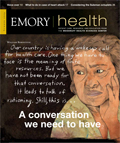A call for change in residents' hours

On an October evening in 1984, Libby Zion came to the New York Hospital in Manhattan. The 18-year-old college freshman arrived in an agitated state with a fever and jerking movements. She was admitted for observation and hydration and then given medication to mitigate her movements.
However, she grew increasingly agitated, was placed in restraints, and eventually given more sedation—all with the approval of an off-site attending physician. The two physicians who treated Zion were first- and second-year residents.
Zion finally calmed down but was not visually re-evaluated by either resident. The first-year resident was taking care of dozens of other patients. The second-year resident was trying to get some sleep. Toward morning, Zion's temperature climbed to 107°F. Before long, her heart stopped. Attempts to resuscitate her failed.
Although the exact cause of Libby Zion's death remains unknown, her case served as a catalyst for a series of reforms in medical education. Twenty-five years after her death, reforms in medical education are still ongoing. Last October, the Institute of Medicine (IOM) issued a report calling for a revision in residents' hours, duties, and workload. The goal is to decrease the chances of fatigue-related medical errors and enhance the learning environment for doctors-in-training.
|
Health care facilities can create safer conditions within the existing 80-hour limit by providing residents regular opportunities for sleep and limiting extended periods of work without rest. — Michael Johns, Emory Chancellor and IOM committee chair |
||
"Fatigue, spotty supervision, and excessive workloads all create conditions that can put patients at risk and undermine residents' ability to learn," says IOM committee chair Michael Johns, chancellor of Emory University.
The Accreditation Council for Graduate Medical Education set the maximum average hours that residents should work at 80 per week in 2003. Rather than further reducing residents' overall hours, the IOM report recommends reducing the maximum number of hours that residents can work without sleep to 16. It also suggests increasing the number of days that residents must have off and restricting moonlighting activities during off-hours.
"Health care facilities can create safer conditions within the existing 80-hour limit by providing residents regular opportunities for sleep and limiting extended periods of work without rest," says Johns.
However, the report cites financial costs and an insufficient health care workforce as major barriers to revising resident hours, and it calls for additional funding for teaching hospitals. Funding additional costs associated with shifting some work from residents to other health care personnel or additional residents could cost medical centers a total of $1.7 billion per year.
The committee, composed of medical and scientific experts from across the nation, also calls for greater supervision of residents by experienced physicians, limits on patient caseloads based on residents' levels of experience in a specialty, and overlaps in schedules during shift changes to reduce the chance of errors during the transfer of patients from one doctor to the next. —Robin Tricoles


